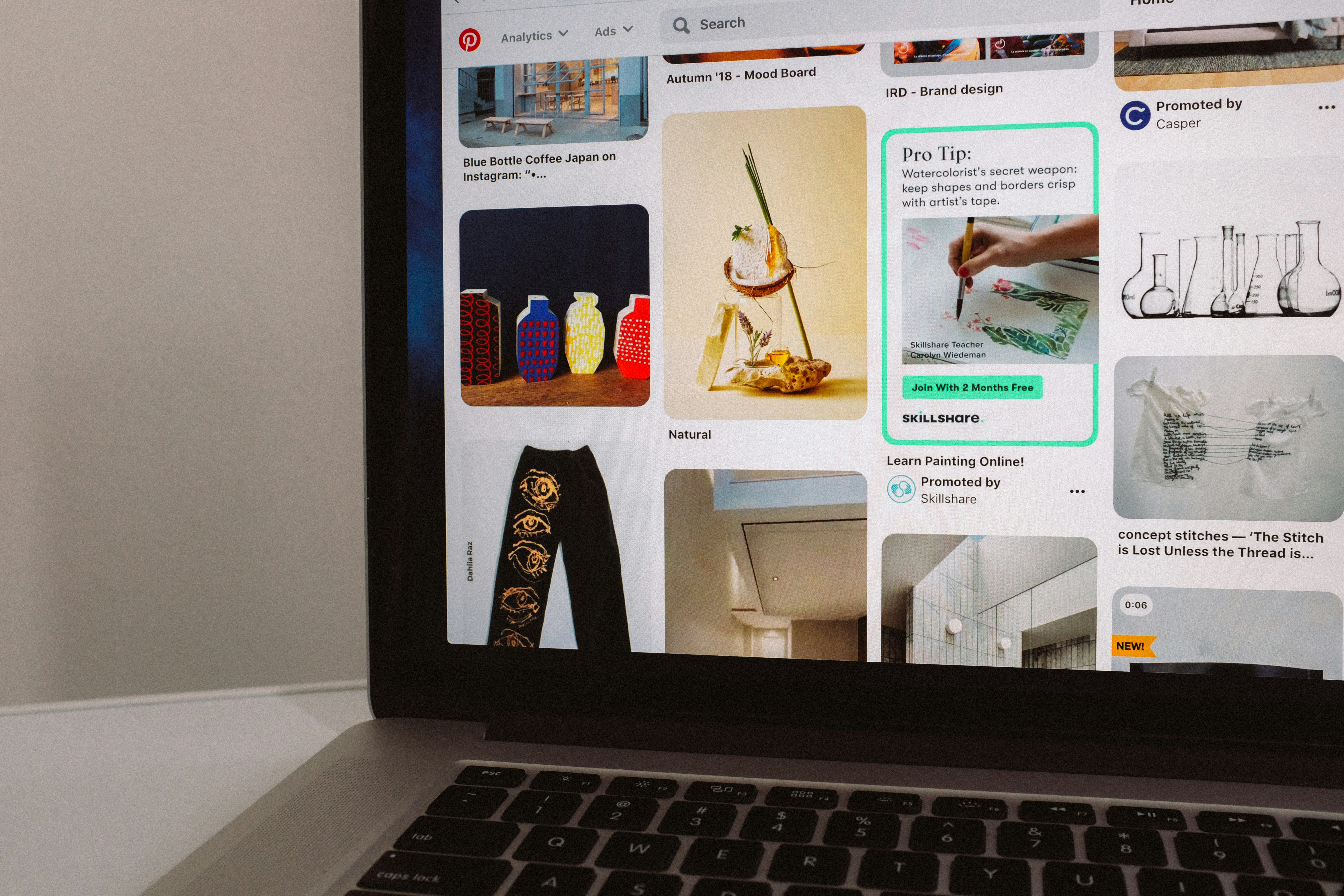Dec 10, 2024
In this independent study, I redesigned Pinterest’s content organization system by introducing a flexible tagging feature. The goal was to help users categorize their saved content more intuitively and improve discoverability across the platform.
Research
I ran interviews with active Pinterest users and casual users to understand their pain points with saving, organizing, and rediscovering content.
Survey (via Google Forms)
Surveys were sent out to Casual and Professional users. Interviews focused on board management, search habits, and content curation styles.
Usability Testing (via Maze)
Surveys were sent out to Casual and Professional users. Interviews focused on board management, search habits, and content curation styles.
Design Process
User Research
We conducted surveys using Typeform and interviewed regular Pinterest users to understand how they organize Pins. We focused on pain points around searching, saving, and board clutter.
Competitive Analysis
We studied tagging systems from platforms like Notion, Instagram Collections, and Trello to inform our own approach to tag-based organization.
Insights Synthesis
We found that most users save Pins for projects, inspiration, or reference. They use different mental models (e.g., organizing by theme, task, color, or season) and expressed a need for more control over organizing saved content.
Sketching
We explored various tag interactions, including:
Adding tags on Pin Save
Tag browsing pages
Suggested tags
We also visualized how tags could cluster similar content beyond the constraints of boards.
Wireframes
We created low-fidelity flows for:
Saving with tags
Managing tags (add/edit/delete)
Browsing tags via profiles and boards
Testing
We ran a usability test using Maze to validate the flows and assess tag visibility. We refined UI placement and interactions based on user hesitation and confusion.
High-Fidelity Design
The final UI introduced a tag input feature and enabled browsing content by tags across user profiles and boards.
Findings
Users found tagging intuitive when saving Pins and didn’t feel it interrupted their flow.
Suggested tags helped reduce effort and gave users a starting point.
Browsing by tag improved content discovery and made old Pins easier to find.
Some users initially confused tags with boards, needing clearer distinction in the UI.
Wireframes
Lo-Fi

Hi-Fi

Outcomes
The final design encourages more meaningful connections while giving users flexible tools that respect their tone and goals.
Testers said it felt “more personal,” “useful,” and “actually made them think before connecting.”
Personalization increases trust—especially on professional platforms.
AI should support authenticity, not replace it.
Premium features feel better when tied to actual productivity, not just status.
If I had more time, I’d love to explore how this message feature could tie into follow-ups post-connection or smart reminders for unanswered invites.
Table of Contents
